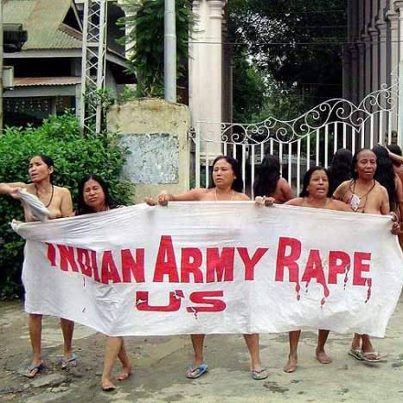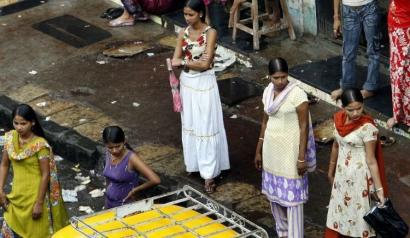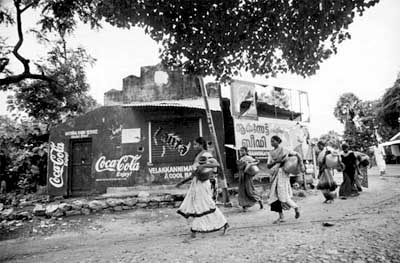I’m returning to write my blog after a long time. I was sick after returning from India. To see India imploding and unraveling made me sick. The noise pollution and street dogs barking all night made me sick.
Then, there was stomach flu here in the U.S. Maybe, coming back to the Monsanto land of fake milk and steroids got me bad.

Woman #2 is one of the ladies who takes care of my old, ailing father in Calcutta. She’s been taking care of him for over five years now. In fact, this story could have been of any one of those poor women who take the early morning train to commute forty or fifty miles from their villages to Calcutta — to help with one of the many such old and ailing fathers and mothers and grandfathers and grandmothers — to return late in the evening to their village, only to show up again the next morning.
Woman #2 is one such poor woman from a West Bengal village in the district of South 24 Parganas. Let’s say, her name is Imagination.
Imagination lives in a village where there is no tap water, electricity or paved road. I know how these villages are: I lived and worked as a teacher in one of those villages for four years before coming to the U.S. In Bengal’s fierce monsoon, the foot trail across rice fields gets washed away and snakes find refuge in mud houses under tin or straw roofs. I remember once I found a hissing cobra inside a colleague’s kitchen they had left unused during the summer vacation.
Imagination lives in one of those mud houses. Snakes are cohabitants there.
Her ordeal is one millions of such women struggle with all their lives. Her husband worked in some manufacturing plant where he had an accident that took a number of his fingers off — making him unable to work normally for the rest of his life. The plant closed down and there was no compensation from the owners. To make matters worse, Imagination’s son could not finish school: there was no money to pay for his school anyways. Pressed hard against the wall, Imagination, a housewife with no knowledge about the outside world, had to come out into the outside world — to make a living. She found a part-time job with a city agency to take care of the elderly.
Imagination never worked outside and never commuted before. She got sick. The four-hour-long commute coming to Calcutta everyday and going back did not help her frail health. She had to take a break for a number of months. She had severe anemia. Now, the whole family began to starve.
Luckily for Imagination, she was not young. Or, she would very likely fall prey to predator hyenas we otherwise call rich or powerful Indian men. She just starved with the rest of her family for a few months. Luckily for her, starving was familiar to them and they knew how to live without eating — an art for Indian poor that we the privileged could never master.
Imagination survived.
Now she’s commuting again — in torrential rain or scorching sun — defying frequent train shutdowns and political violence on one hand and unbelievable price rise on the other. One third of her wages now ends up in purchasing monthly train tickets and auto rickshaw fare. Fortunately, the crippled husband somehow managed to find a country gardener’s job and the school-dropout son also managed to find a rail station hotel boy’s job. Both jobs are lowest-paid. But the family is still alive.
Only problem is that Imagination now got her anemia back coupled with a seemingly incurable cough. It flares up in the monsoon. It is likely that she won’t be able to work for too long. I saw her the last time I was in Calcutta and found her in a miserable health situation. She doesn’t make enough money to go to a reputable doctor. We try to help her a little bit. But it’s not enough. My sister bought her a cell phone that she uses to keep in touch with her family in the village — especially if there’s a train shutdown or violence on the street that prevents her to return home at night.
Here, my father who’s now 90, would not last long if Imagination did not take care of him: he’s so frail and so dependent on her.
It’s time for me and my family to watch who goes first: imagination or reality.
And that’s the story of Woman #2 in this series. I’ll tell you about another woman soon.
Promise I won’t be long.
Sincerely Writing,
Partha
Brooklyn, New York
###









